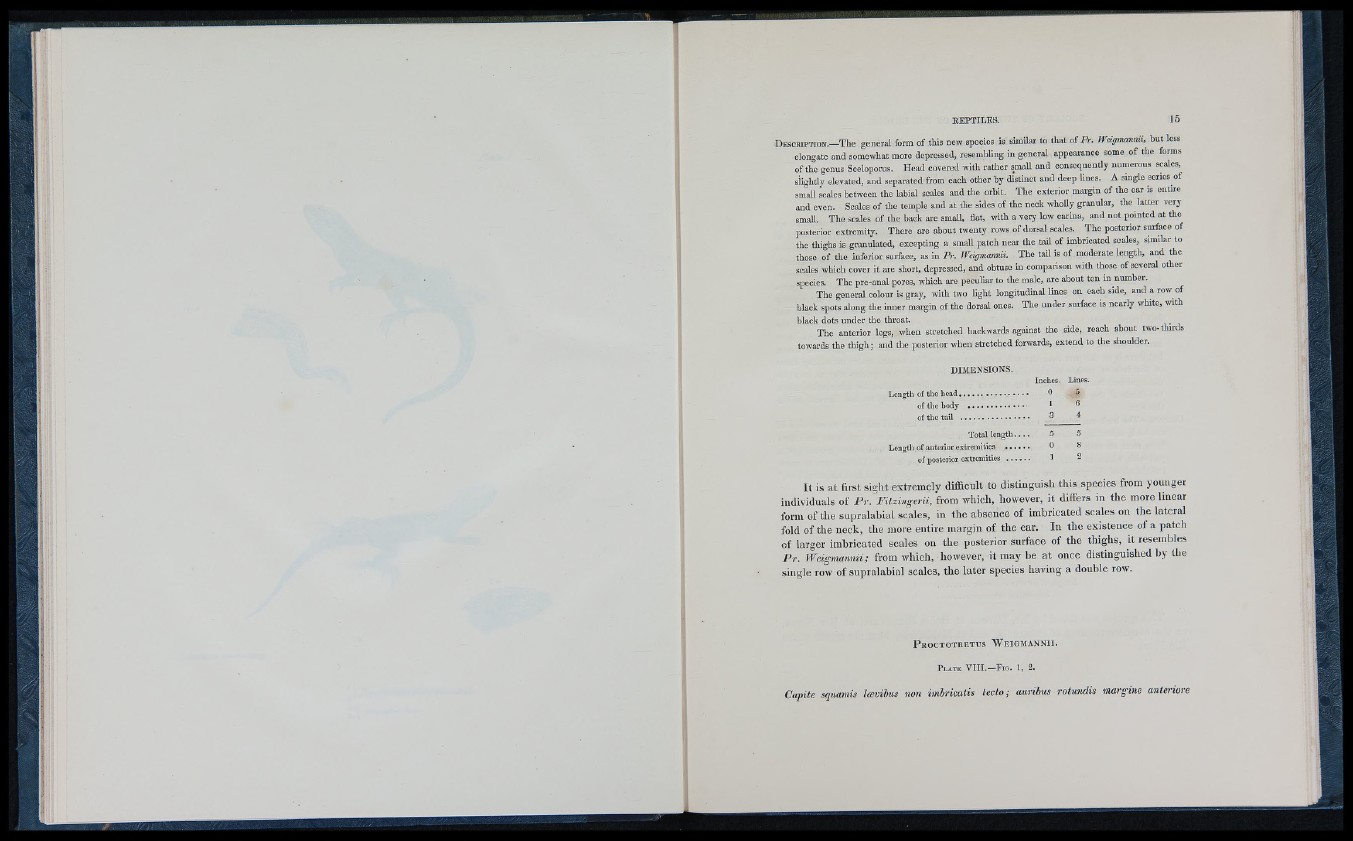
REPTILES. 15
D e sc r ip t io n .— T h e g e n e ra l form o f th is new species is similar to th a t o f TV. Weigmanna, b u t less
elonga te an d somewhat more depressed, resembling in g en e ra l ap p e ara n ce some o f th e forms
o f th e genus Soeloporus. H e ad covered with ra th e r small a n d co n seq u en tly numerous scales,
slightly elevated, an d sep a rate d from ea ch o th e r b y d is tin c t a n d deep Unes. A single series o f
small scales betwe en th e labial scales a n d th e orbit. T h e e x te rio r m a rg in o f th e ea r is entire
an d ev e n . Scales o f th e temple a n d a t th e sides o f th e n eck whoUy gra n u la r, th e la tte r very
small. T h e scales o f th e b ack are smaU, fiat, w ith a very low carina, a n d n o t p o in ted a t the
posterior ex trem ity . T h e re are ab o u t twen ty rows o f dorsal scales. T h e p o s te rio r surface o f
th e thighs is g ra n u la ted , ex c ep tin g a smaU p a tc h n e a r th e ta ll o f im b ricated scales, similar to
those o f th e inferior surface, as in P r . Wrigmanmi. T h e ta il is o f modera te le n g th , an d the
scales which cover i t are short, depressed, an d obtuse in comparison w ith those o f several o th e r
species. T h e p re -an a l pores, which are peculia r to th e male, are ab o u t te n in num b er.
T h e g en e ral colour is gray, w ith two lig h t lo n g itu d in a l lines on ea ch side, an d a row o f
black spots along th e in n e r margin o f th e dorsal ones. T h e u n d e r surface is n ea rly white, with
black dots u n d e r th e throat.
T h e an te rio r legs, wh e n s tre tc h ed backwards aga inst th e side, re a ch ab o u t two-thirds
towards th e th ig h ; an d th e posterior when s tre tc h ed forwards, ex te n d to th e shoulder.
DIMENSIONS.
Inches. Lines.
Length of the head 0 5
of th e b o d y 1 6
of th e ta il ...................................... 3 4
T o t a l l e n g t h . . . . 5 5
L en g th of a nterior extremitie s ............. 0 8
o f posterior extremities ............. I 2
I t is a t first sight extremely difficult to distinguish this species from younger
individuals of P r . Fitzingerii, from which, however, it differs in the more linear
form of the supralabial scales, in the absence of imbricated scales on the lateral
fold of the neck, the more entire margin of the ear. In the existence of a patch
of larger imbricated scales on the posterior surface of the thighs, it resembles
P r . Weigmannii; from which, however, it may be a t once distinguished by llie
single row of supralabial scales, the later species having a double row.
P r o c t o t r e t u s W e i g m a n n i i .
P late V I I I . - F ig . 1, 2.
Capite squamis lævibus non imbricatis tecto; auribus rotundis margine anteriore